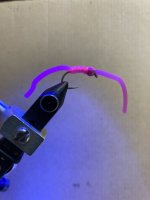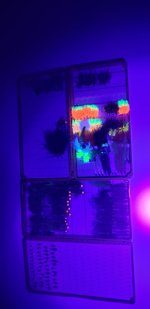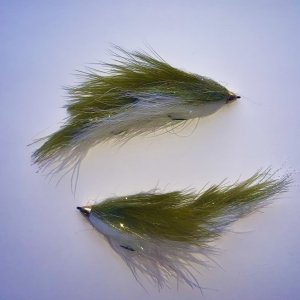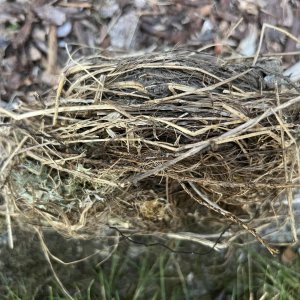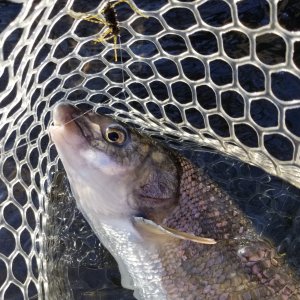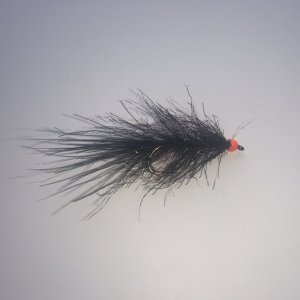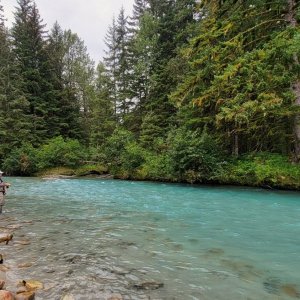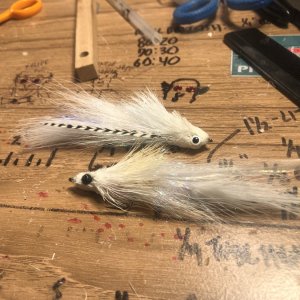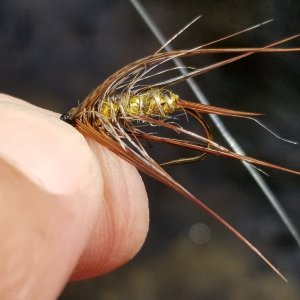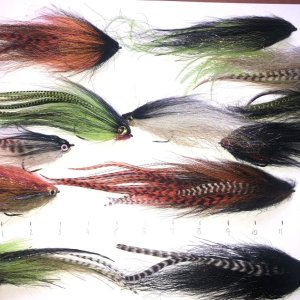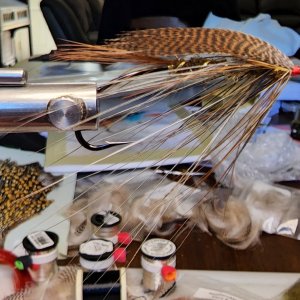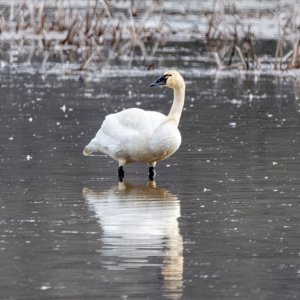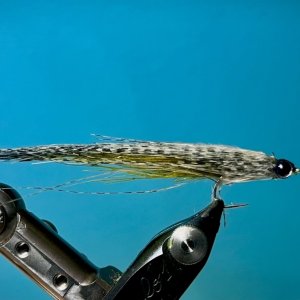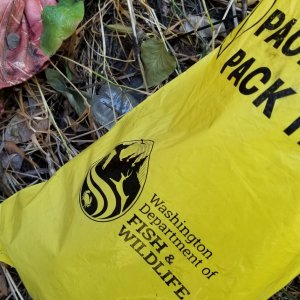At the NWExpo, I sat with a gentleman tying truly wonderful flies out of common, but not necessarily common materials. Fascinating. One of the things he showed me was a very fine white fiber that fluoresced brightly when using his uv light. He had an interesting way of acquiring that fiber which he showed me as well. And he opined that some thread like this might enhance flies in stillwater.
First, I'm stunned at the generosity of this gentleman, and frankly everyone at the show in freely sharing techniques and materials in tying. Sorta makes you think we might have some redeeming value as a species.
But, on the way home I thought about UV fluorescent materials in nature and by now I've google searched for uv fluorescence in existing tying thread and materials.
Not to ask for a revealing revelation, but do any of you incorporate UV fluorescent materials in tying specifically for that property? Should a guy, any guy, say, think that might improve one's catch rate? Or are most of the materials that fluoresce that you use simply coincidental to that material, i.e. some silk threads. Or have you noticed at all?
I'm gonna get out my UV light and scan my tying stash.....just to see
First, I'm stunned at the generosity of this gentleman, and frankly everyone at the show in freely sharing techniques and materials in tying. Sorta makes you think we might have some redeeming value as a species.
But, on the way home I thought about UV fluorescent materials in nature and by now I've google searched for uv fluorescence in existing tying thread and materials.
Not to ask for a revealing revelation, but do any of you incorporate UV fluorescent materials in tying specifically for that property? Should a guy, any guy, say, think that might improve one's catch rate? Or are most of the materials that fluoresce that you use simply coincidental to that material, i.e. some silk threads. Or have you noticed at all?
I'm gonna get out my UV light and scan my tying stash.....just to see

